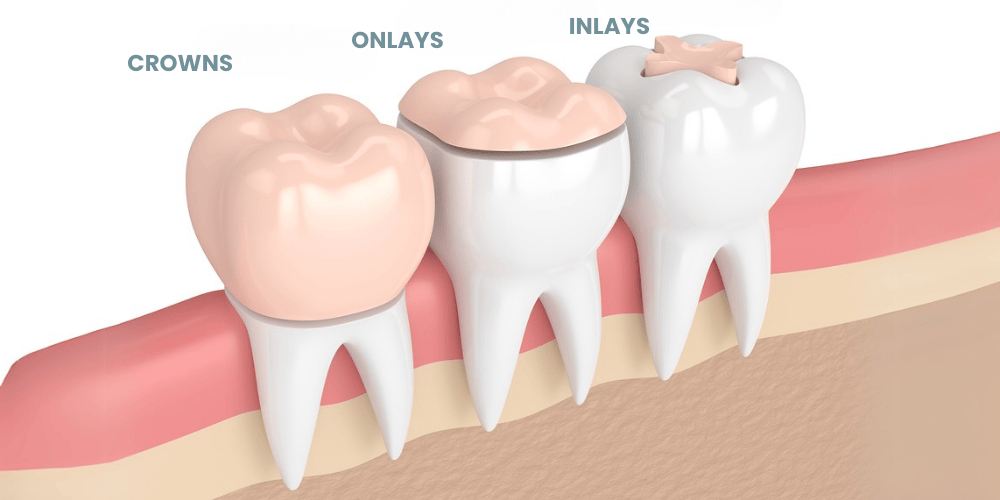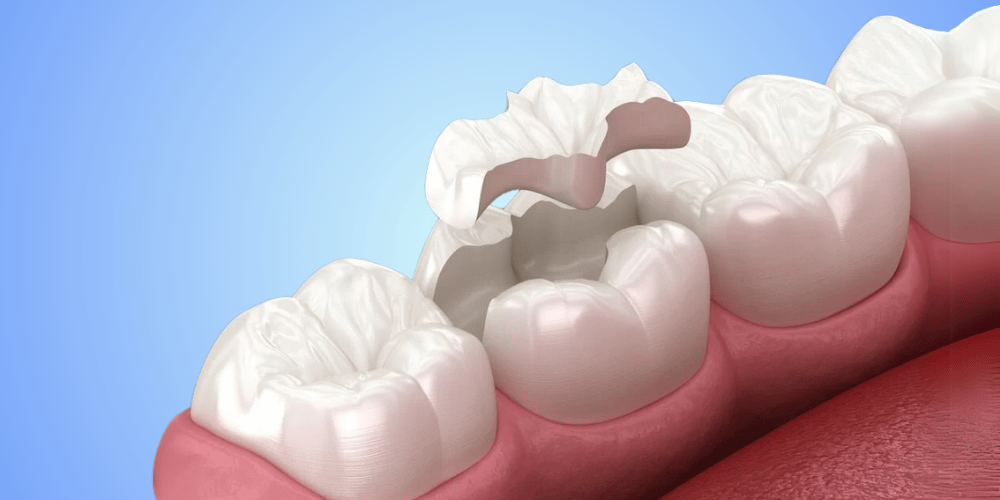Restore damaged or decayed teeth with inlay and onlay restorations, offering the perfect combination of durability and aesthetics. These custom-designed restorations fit seamlessly into your teeth’s natural contours, enhancing both function and appearance. Ready to transform your smile? Book Your Consultation today.

What are Inlay and Onlay Restorations?
Inlay and onlay restorations are designed to repair teeth with damage or decay too extensive for fillings but not requiring a full crown. They are crafted from durable materials like porcelain or zirconia and customized to blend with your natural teeth.
Discover how these advanced solutions can restore your smile. Contact Us today.

Benefits of Inlay and Onlay Restorations
- Durability: Resistant to wear and tear for long-lasting results.
- Aesthetic Appeal: Color-matched to blend seamlessly with natural teeth.
- Conservative Approach: Preserves more of the natural tooth structure.
- Custom Fit: Ensures comfort and functionality.
Enjoy the benefits of precision-crafted restorations. Schedule Your Appointment today.

Inlay and Onlay vs. Crowns
- Inlay/Onlay: Ideal for partial tooth damage, preserving more natural tooth structure.
- Crown: Covers the entire tooth, suitable for severe damage.
Not sure which option is right for you? Contact Us for a personalized consultation.

All-Ceramic Inlays and Onlays
All-ceramic inlays and onlays offer a natural-looking, esthetic solution that blends seamlessly with your teeth. These restorations are perfect for visible areas of your mouth, delivering strength and beauty in one package.
Enhance your smile with all-ceramic options. Contact Us for more information.

Precision Process for Inlays and Onlays
- Step 1: Consultation and preparation of the tooth.
- Step 2: Impressions for a custom fit.
- Step 3: Temporary restoration placement.
- Step 4: Final placement of the inlay or onlay.
Experience expert care every step of the way. Schedule Your Appointment now.
Why Trust Dentist in Bowie For Your Inlay and Onlay Restorations?
Experienced Care
Our team stays up-to-date with the latest treatments for your best care.
Sanitation & Safety
We follow strict sterilization protocols for your protection.
Comfort
Enjoy a relaxed, stress-free atmosphere during your visit.
State-of-the-Art Technology
We use advanced tools for effective, efficient treatment.
Personalized Approach
Treatment tailored to your unique dental needs for optimal results.
Frequently Asked Questions
Strengthen Your Teeth with Inlay and Onlay Restorations!
Visit the top dental clinic near you at Dentist in Bowie. Schedule your consultation today for durable and aesthetically pleasing tooth restorations.
Call us today or fill out our online form to get started!





